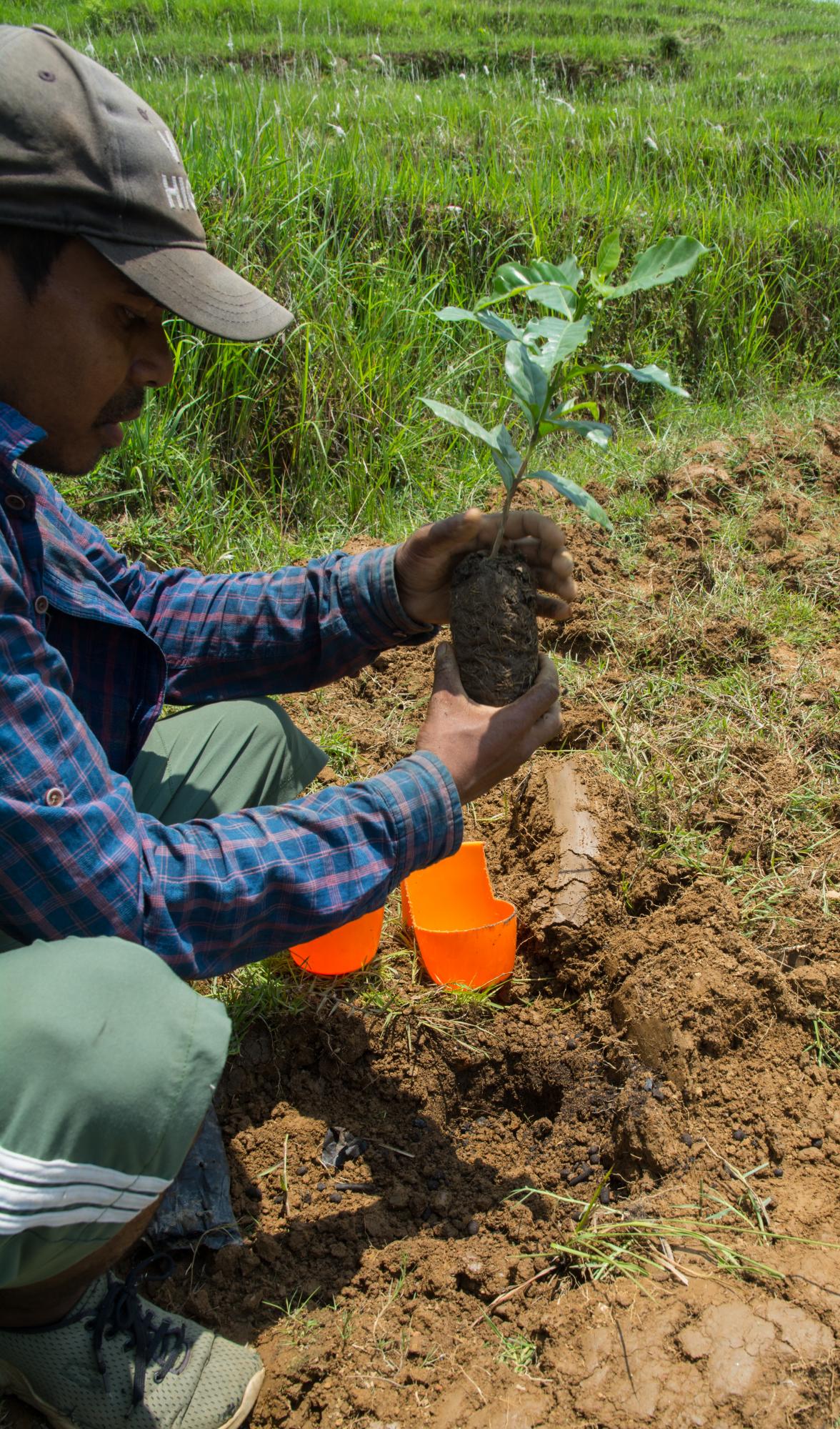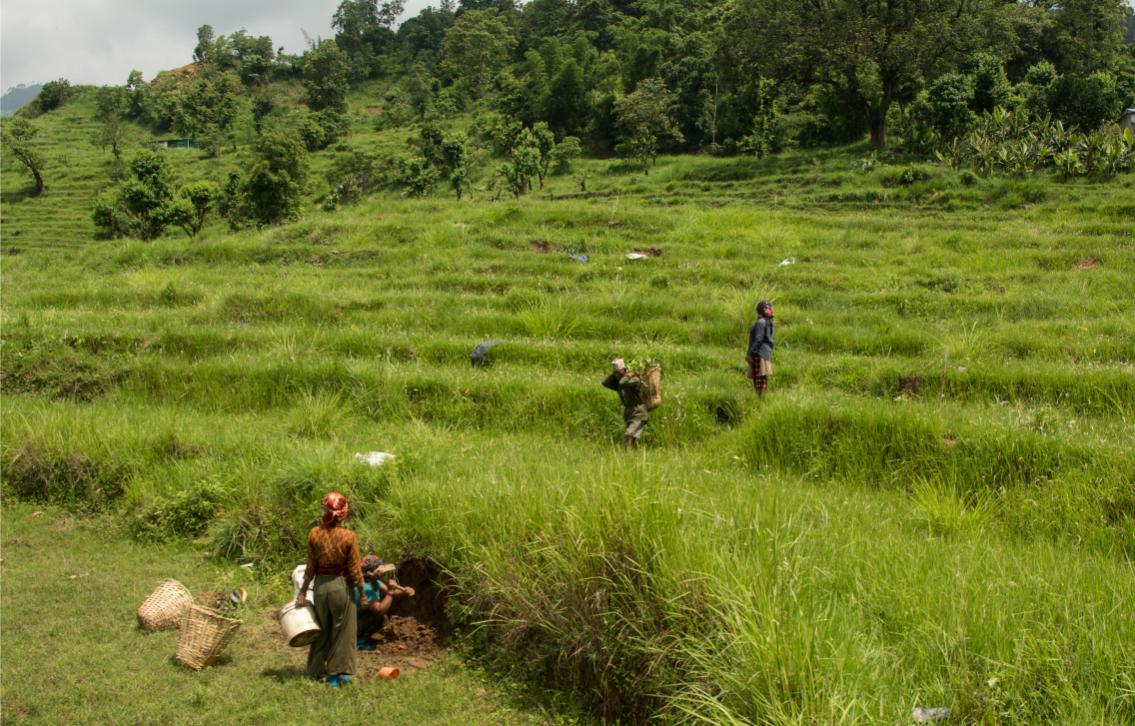Photo Story from Simon Lotz 2023 2nd
Carbon Farming in Nepal to fight climate change and shape the future of agriculture
Carbon farming seeks to sequester atmospheric CO2 on agricultural land. To evaluate and compare different carbon farming approaches we launched the Ratanpur Carbon Farming Project, as a long-term, large-scale comparison of tropical carbon farming systems in the mid-hills of Nepal. The purpose of the project is to evaluate which farming models are best suited to efficiently remove and store CO2 from the atmosphere on agricultural land while bringing the land to its full potential regarding generation of local income and food production. Specifically, we want to find out how sustainable agricultural practices and negative emission technologies, such as biochar soil amendments, can potentially be merged to fulfil local and global demands for 21st century agriculture. Thus, we focus on establishing systems that link the outstanding photosynthetic carbon extraction potential in the tropics with biomass pyrolysis to create biochar and thus efficiently and safely sequester carbon to mitigate climate change.
Overall, in 2023 nine different carbon farming systems were established, they vary in their species composition but all revolve around coffee as main crop. The carbon farming systems could be characterized as different agroforestry systems, for instance, one tests the combination of coffee and moringa, while another one is about coffee and fruit trees and the next about coffee and bamboo. This year were planted around 5000 coffee seedlings, 1000 fruit trees (ten different species), Moringa and perennial grasses using a locally-produced, organic biochar-based fertilizer.
The performance of the different systems will from now on be evaluated regarding their capacity to act as a carbon sink, yields and their resilience to detrimental impacts caused by a changing climate.

Photo 1: Farmers prepare planting pit and use biochar-based fertilizer for rootzone application.

Photo 2: Locally sourced, organic, biochar-based fertilizer (Co-composted biochar and goat manure).

Photo 3: Farmer assessing quality of coffee seedling.

Photo 4: Abandoned rice terraces are used for the establishment of carbon farming plots.

Photo 5: Women planting coffee seedling.

Photo 6: Farmer planting lemon tree on abandoned rice terrace.

Photo 7: Group picture of the Ratanpur Carbon Farming Project Team.

Photo 8: Overview of the land, where carbon farming systems are planted.

Photo 9: Landscape around the project area: Mid-hills of Nepal (Tanahun).

Photo 10: Recently planted coffee seedling, with barcode tag to monitor its development.
